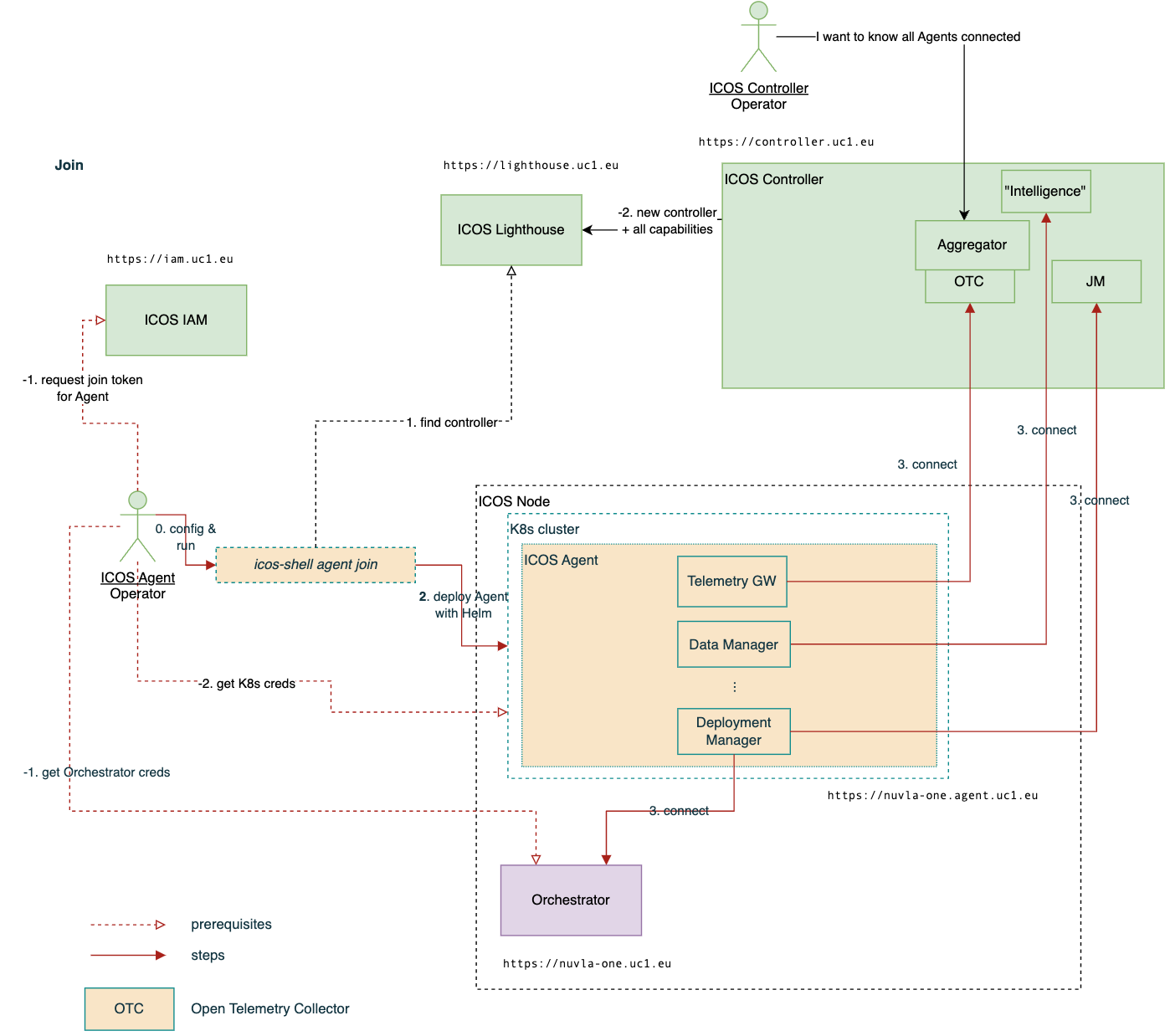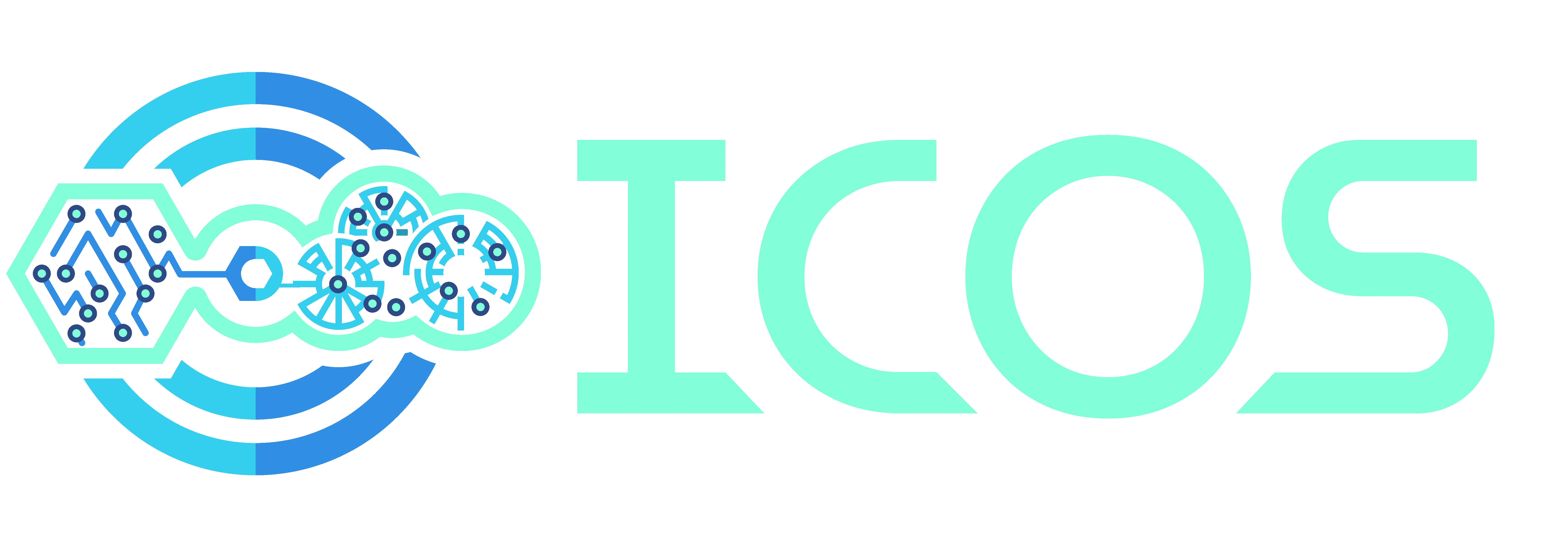Onboarding in ICOS: Embarking Edge devices into the IoT-to-Cloud Continuum
As edge computing matures, onboarding devices and services into a unified ecosystem becomes a critical task, especially when that ecosystem spans from sensors in the field to high-performance computing in the cloud. The ICOS project (IoT2Cloud Operating System) is tackling this challenge by offering a streamlined and intelligent approach to onboarding that supports flexibility, automation, and interoperability.
Let’s explore how onboarding works within ICOS, focusing on practical mechanisms that help bring edge devices, nodes, and services into the compute continuum.
The ICOS metaOS architecture allows for dynamic service orchestration, application portability, and efficient resource use, regardless of where the workload runs.
ICOS works as a distributed metaOS, with two main components:
- the ICOS Controller, responsible for the overall management of the system and the resources;
- the ICOS Agent, responsible for the management of the nodes attached to it.
Onboarding plays a key role in making this vision work. The onboarding process needs to be reliable and secure, so that devices and applications can seamlessly join the ICOS environment and be managed through its orchestration layers.
In ICOS, onboarding is the process by which a new component (a physical deviceor a virtual node) is registered, configured, and made ready for orchestration and monitoring. It ensures that once a device or service joins the system, it can:
- Be discovered and monitored
- Receive and execute tasks
- Communicate with the rest of the continuum
- Be updated and managed remotely
The onboarding process is managed by the Resources Onboarding element, a functional element responsible for facilitating the onboarding process of ICOS Agents and Edge devices.
ICOS Onboarding Process
First of all, the ICOS Agent Operator provides a set of credentials, to be used for the set-up of a secure communication channel between the Agent and the ICOS Controller and for the configuration of the Agent.
The remaining steps of the onboarding procedure depend on the chosen Cloud-Edge Orchestrator chosen: both Open Cluster Management (OCM) and Nuvla have been integrated within the ICOS project.
Let’s first focus on onboarding through Nuvla, a commercial edge management platform developed by SixSq. Before deployment, the target device (such as an edge gateway or industrial PC) is commissionned with the NuvlaEdge agent, a lightweight software package that enables secure communication with the orchestrator.
When the device powers on and connects to the network, it contacts the Nuvla.io platform using secure communication (TLS). It presents identifying information, often using public key infrastructure (PKI) for authentication. This registration step creates a new edge device in the Nuvla.io platform, where it can be monitored and managed.
Using Open Cluster Management, the hub cluster must be prepared with OCM components before onboarding the edge cluster. The cluster establishes secure trust and communication through a registration process, and then installs an OCM agent.
This agent reports to the hub and enables lifecycle and policy management in the cluster. Finally, the hub approves the cluster which can now be fully managed within the OCM framework.
The last step of the onboarding is the connection of the onboarded Container Orchestration Engine with ICOS, which is performed by telemetry collection and labeling agents deployed on the node. They collect the COE’s required topology and configuration and push it to the ICOS Aggregator, which provides a unified overview of the infrastructure with resource information and metrics.
A detailed ICOS Agent onboarding diagram is available at the end of this article.
The node is now available on the ICOS UI, from where several actions can be performed:
- Deploy and update containerized applications
- Collect metrics and logs
- Trigger workflows based on real-world events or schedules
The simplicity and automation of this onboarding process is key, as ICOS aims to simplify how organizations manage complex, distributed infrastructures. By reducing manual setup and offering API-driven automation, ICOS enables organizations to scale their edge deployments faster. From smart agriculture to transportation systems, the ability to onboard devices quickly and consistently is key to unlocking real value from the edge.


This project has received funding from the European Union’s HORIZON research and innovation programme under grant agreement No 101070177.


